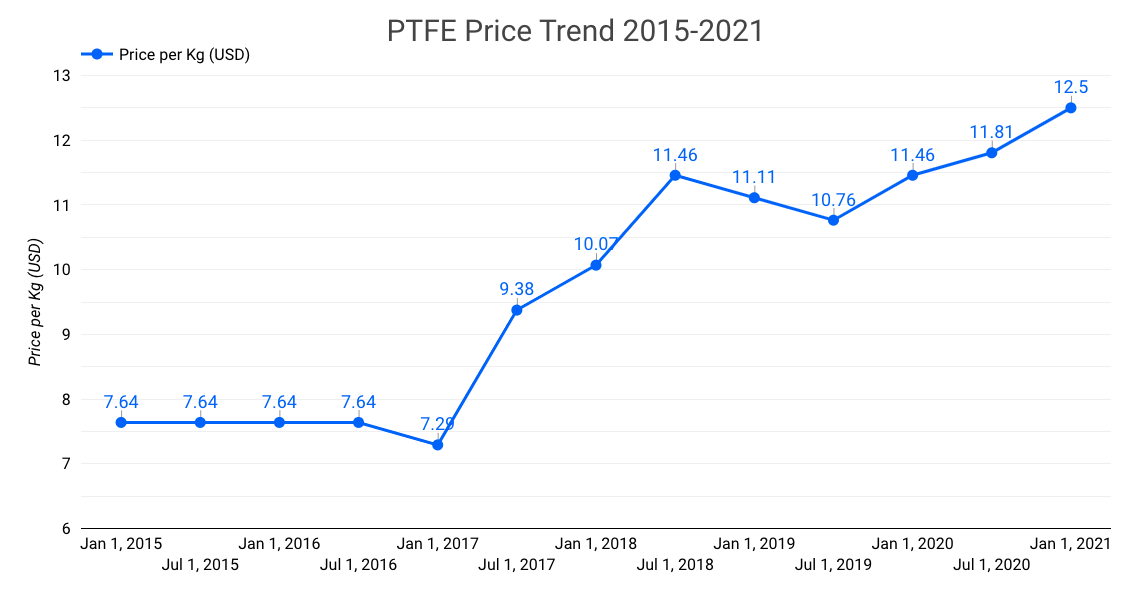The high performance plastics space is a wide spectrum of different products, each with properties, characteristics, and processing nuances that could take a lifetime to fully learn. On the one hand, melt-processible plastics – such as Polypropylene, Polyethylene, ABS, and Nylons – form the mainstay in terms of volumes, since these are commonly used in consumer goods and are both cheap and relatively easy to handle. In contrast, non-melt processable polymers – such as PTFE (Teflon) and UHMWPE – are relatively niche in their application and can only be machined into a final component using a ‘stock shape’, such as a rod, sheet, or tube.
Somewhere in between these two extremes are a collection of polymer grades that, while being melt-processable, are still mainly machined, due to certain challenges that not everyone can surmount in the moulding process.
Our journey through the polymer space has seen us delve deep into two such plastics: PEEK and PPS. While both PEEK and PPS are certainly injection mouldable (that is to say, they have a decent enough ‘melt flow’ that would allow them to be injected into a mould to give a final shape), there remain some complications with regards to the processing.
-
Temperature – both injection moulding PEEK and PPS requires melting at temperatures well above 300°C. This implies that any heating equipment designed for low-temperature plastics, such as Polypropylene (which melts at ~160°C) may struggle to maintain such high temperatures
-
Equipment – while higher temperatures can be attained using additional or higher kilowatt heaters, the equipment itself often needs to be modified to handle PEEK. Our own experience with compression moulding told us that PEEK reacts to metals in a way that makes handling it in its liquid state very difficult. The screw and barrel of a normal injection moulding press would be unlikely to survive more than a few months with PEEK flowing inside it
Similarly, the mould itself would need to be specially constructed to maintain consistency over the long term
-
Cost – one of the nice things about low-cost polymers is that trials are not expensive. The mould is usually the bulk of the development cost, after which throwing raw materials into the mix until all the kinks are ironed out does not burn any holes in one’s pocket. Polypropylene, for example, is presently selling for ~US$2 per Kg (after a recent spike of over 75%!). In contrast, injection moulding grades of PEEK sell for ~US$100 per Kg, while PPS is a slightly more sedate ~US$25-30 per Kg. In other words, we’re looking at a cost multiplier of 12-50X, meaning each trial becomes expensive to conduct and the financial risk of not getting a part right can be significant.
-
Properties – compounding the cost issue is the fact that PEEK and PPS are temperamental materials. PPS, for one, tends to crack easily unless we use exactly the right combinations of temperature, pressure, and other fillers, such as glass. PEEK, which is a little better behaved, can still exhibit excessive shrinkage in some areas (leading to tool modifications and more trials), and also prone to internal stresses unless annealed properly.
With so many hurdles to getting it right, there is little doubt that even medium to high volume project requirements prefer to machine these high performance polymers from stock shapes rather than mould them. The risks involved in moulding mean that the upfront development charges do not only include the cost of making the mould but also need to factor in high trial costs, which push the economics back in favour of machining.
However, there will always be parts that cannot be machined; where the dimensional complexities entail that injection moulding is the only way forward. One of the reasons that both PEEK and PPS are so sought after in fields such aerospace, automotive, and chemicals is that there exist few other materials that have both the physical strength, are lightweight, and have the chemical resistance needed to hold their own in any environment. Therefore, when PEEK and PPS are needed, there are no alternatives for an OEM other than to invest in the development of these components. In such a situation, processors that understand the material, invest in the right equipment and are willing to take a chance to develop and learn the behaviour of these polymers stand the best chance to thrive in an industry where injection moulding has devolved into a very commoditised space.
At Poly Fluoro, we have always stayed one step ahead in terms of our understanding and our willingness to explore new high performance polymers. We did this when we put up India’s first paste-extrusion plant for PTFE tubes. We did it again with expanded PTFE, where we remain India’s only manufacturers and where we are even presently developing new variants of ePTFE tapes, tubes, and membranes for specialised applications. The same boldness allows us to expand into PEEK and PPS injection moulding, while our success with our other ventures fills us with the confidence that here too, we will succeed.
Read More
1. Case Study - Development of a 4-axis PEEK Valve
2. Polyphenylene Sulfide (PPS) - A robust polymer with multiple applications


.PNG)

